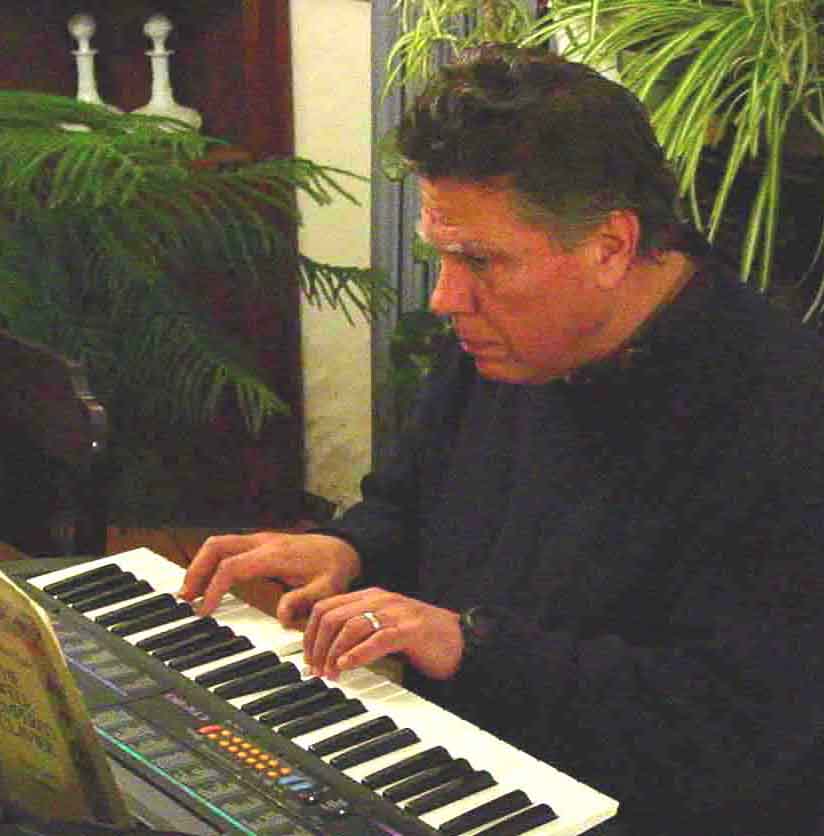Neely's Blog #10

Home
About Neely
Bill of Rights
Compositions
Contact
E-mail List
Neely's Blog
Photos
Upcoming Events
BLOG NUMBER TEN
September 20, 2006
Yesterday the list of my upcoming performances was posted on this website. Sometimes I wonder, “What was I thinking?” This fall is going to be exciting, but somewhat harrowing. Take my word for it, there is a reason for this bout of hyperactivity, but I won’t bore you with the details. Instead I’ll write a few words about the music for each event.
Organ recital, 24 September: I don’t get to play organ recitals very often. In fact I can only remember playing six or seven, all of them short, all of them at South Church in Middletown. On Sunday mornings I get to play what is probably the best organ in Middletown, and one of the best in central Connecticut—in the future I’ll describe it in more detail. This Sunday is my first foray into another church as a solo organist. My concerns with the King of Instruments are quite straightforward. First of all, it is the greatest solo instrument for improvisation. Irresistible, in fact. Second, there are specific collections, a bit off the beaten track (or farther), that I practice a lot and keep in repertory, namely the Fiore Musicali of Frescobaldi, Organ and Silence by Tom Johnson, and the astonishing Messe des Pauvres of Erik Satie. All of these compositions assume manual dexterity and modest pedal technique. But that raises a third concern, the strong desire to improve my pedal technique, however gradually that has to be done. To that end I’ve decided to learn Orgelbuchlein of J. S. Bach. Except for Organ and Silence, selections from all of these works are included. Toby Twining will join me to sing the Kyrie from the Satie mass and “Grandfather’s Clock” (one of the favorite songs of the deceased). And I get to improvise on Gladys’s favorite hymns and two tunes from The Sacred Harp. Sounds like fun, doesn’t it?
Piano recital, 25 September: Back-to-back recitals, however brief they may be, are a new experience, even for me. The Wesleyan chapel has a new piano, a magnificent August Förster, brand new. After seven (!!) years of lobbying and brainstorming, and through the good graces of the current administration, we have been able to purchase this instrument from the remarkable Wilhelm Gertz (of W. Gertz and Sons, New Haven), who kindly saved the instrument for us (rather than have it go to the beach house of a perspective wealthy buyer). Thanks to Sophia Rosoff, my current piano teacher and the finest piano teacher I know of, anywhere, any time, I feel in top form. I played the recital yesterday (Tuesday the 19th) for my associate Sue Birch, and it went quite well. The variations are one of my favorite Mozart piano pieces—I have a theory that the sort of virtuosity they require (occasional fast passages in double notes and octaves, some big leaps which are occasionally awkward, left hand trills, etc.) are more like Amadé actually played that most of, say, the sonatas, which almost never require these things. Mozart boasted that he never played one of his concerti the same way twice—maybe he was adding this kind of lick, who knows? In any case, eager to experiment with this possibility, I have added MORE octaves, some extra doublings, a couple of cadenza-like flourishes, tasteful ones I hope, but more to the point quite spontaneous and NOT what’s written on the page. At least I can emulate the master in this respect, and never play the “Come un agnello” variations the same way twice!
These variations also bring to mind an old friend whom I have not seen in years, the pianist Jerome Sampson of Jackson, Mississippi. He and I studied with Roy McAllister in Tuscaloosa (University of Alabama) at the same time. Although I haven’t heard Jerry play in 44 years, I remember his performance of this piece as if it were yesterday—he played these variations beautifully.
For the past two and a half years I have been composing a series of “Friendly Fugues,” based on the names of some of my friends. Some of them, including the first one, have been composed at the request of the person whose name becomes the subject (see below). Katchen Coley approached me at a Christmas party in 2003 and asked, “Neely, will you write a piece for my eightieth birthday?” Of course I agreed, and this piece was the result. I turned her name into a fugue subject by writing down the letters of the alphabet in seven columns, thus:
a b c d e f g
h i j k l m n
o p q r s t u
v w x y z
then I mapped any letters in the various columns—below the first row—onto the letters in the first row, i.e. the letters of the musical alphabet. (For example, the letter R, which is not used in musical nomenclature, becomes the note D.) In this process I also allow the German alphabetic equivalents of certain letters, so B can be B flat, H can be B natural, and S can be E flat (my choice). Incidentally, I didn’t invent this method of transforming words into notes, and there are other ways of doing it.
Katchen’s name becomes “D A F C B E G C A E E D,” with an appropriate rhythm of course, and Billy Weitzer (a member of the Wesleyan administration who has been quite supportive of the Music Department and helped us purchase the August Förster) turns out to be “Bb B E E D B E B F E E D,” something of a challenge as a fugue subject because of the repeated cell (EED EED), but challenges are what makes composition fun.